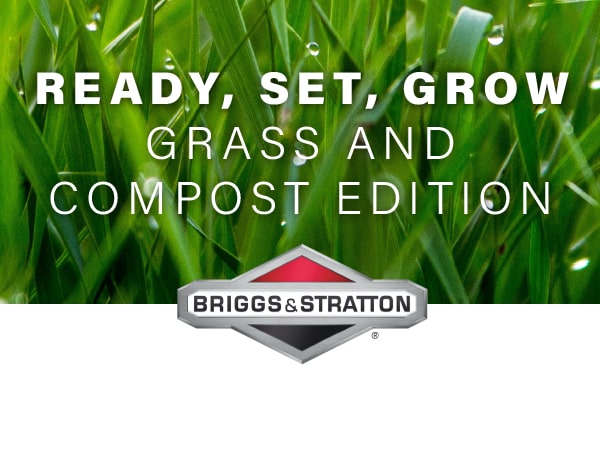Ready, set, grow:
grass and compost edition
This month’s article is all about getting your soil and grass summer ready and looking the part. Caring for your soil and grass will keep plants and landscaping looking its best throughout the year and will encourage additional growth and extra lush foliage.

It’s composting time! How to make your own:
Home composting is easy, sustainable and can be used as an excellent soil improver. Compost helps to improve the soil quality by enabling it to better retain moisture, air, and nutrients. From container plants to flower beds, compost is a great natural way to kick start a healthy plant journey!
How to make compost:
Composting can be done all year and you can add to it as and when certain materials are available. It can take six months to two years for compost to mature so it’s best to plan in advance when you need to use it in your garden.
There are various compost materials you could use, usually referred to as green (leafy plants, kitchen waste such as fruit and vegetables, manure) and brown (hedge trimmings, woodchip, paper, card). An open heap of these materials will compost eventually, however a compost bin is recommended as the warmth and moisture will help create your compost more quickly.
Top tips:
Aim for 25-50% green materials, with the rest being woody brown materials. If you don’t have enough green materials available to you, you can top up your compost using accelerators and activators.
Turn the compost heap every month or so to introduce air and prevent wet slimy or strong-smelling compost.
Remember to keep the heap moist in dry weather to prevent it from drying out.
When and how much compost to use depends on the soil type in your area, time of the year and what you are growing. It’s a good idea to ask at a local garden centre as they will likely know the soil type in your area and be able to advise how you should best utilise your compost.

Get grass summer-ready: mowing, weeding, and reseeding
Overgrown, lifeless, or just dry and patchy? When caring for your grass, we have 3 key words to keep it looking its best:
Mowing – Keeping your mower running efficiently will ensure your grass is cut properly and stays healthy. A simple mower tune-up only takes five minutes and can really help to keep your mower working at its best and encourage great grass. You can read about how to service your mower at home here.
Top mowing tips:
Check through long grass for big rocks and rubbish before mowing.
During less warm months (e.g., March-June), you will likely need to cut your grass once or twice a month. During the hot summer months, you may need to cut it as often as once a week.
Many people collect the grass clippings after mowing – but these are actually great to leave on the lawn to break down and return to the soil, adding lots of nutrients back into the ground!
Weeding – Many lawn weeds – such as dandelions, daisies, and buttercups – are fine to leave in the grass as they help to create an environmentally-friendly lawn that’s great for bees and other wildlife. However, weeds might become a problem if they become too invasive and start to compete with the grass for space to grow. Spotting them early and removing them quickly is the best method for preventing large-scale problems.
Top weeding tips:
We recommend trying non-chemical options first – digging out by hand works best for most weeds and helps to avoid any damage to the grass.
Feeding grass and providing the best conditions for grass to grow more vigorously will make it more difficult for weeds to compete.
If you do choose a chemical weedkiller, make sure to read the label to ensure it works for the specific weeds on your turf.
Reseeding – You can reseed patchy grass to help encourage re-growth and create a more even lawn. Sow grass seeds early autumn or mid-spring. Early autumn is recommended as it will give the grass time to develop deeper roots over the winter and create stronger growth in the spring. Always read the pack of seeds to find out which type of seed is best for you and how often you should water it.
Top reseeding tips:
Sow half the seed over the whole area by first working in parallel rows widthways, then do the same lengthways. This will encourage more even seed distribution.
Don’t use lawn weedkiller on newly sown lawns within the first six months after germination.
If there are lots of birds in your area, increase sowing rate by 50% to compensate for birds eating and disturbing the seedbed.
And there you have it… Our guide to having healthy grass and soil! We hope these tips help and don’t forget to check out our other gardening articles and Facebook page for more great gardening tips!






